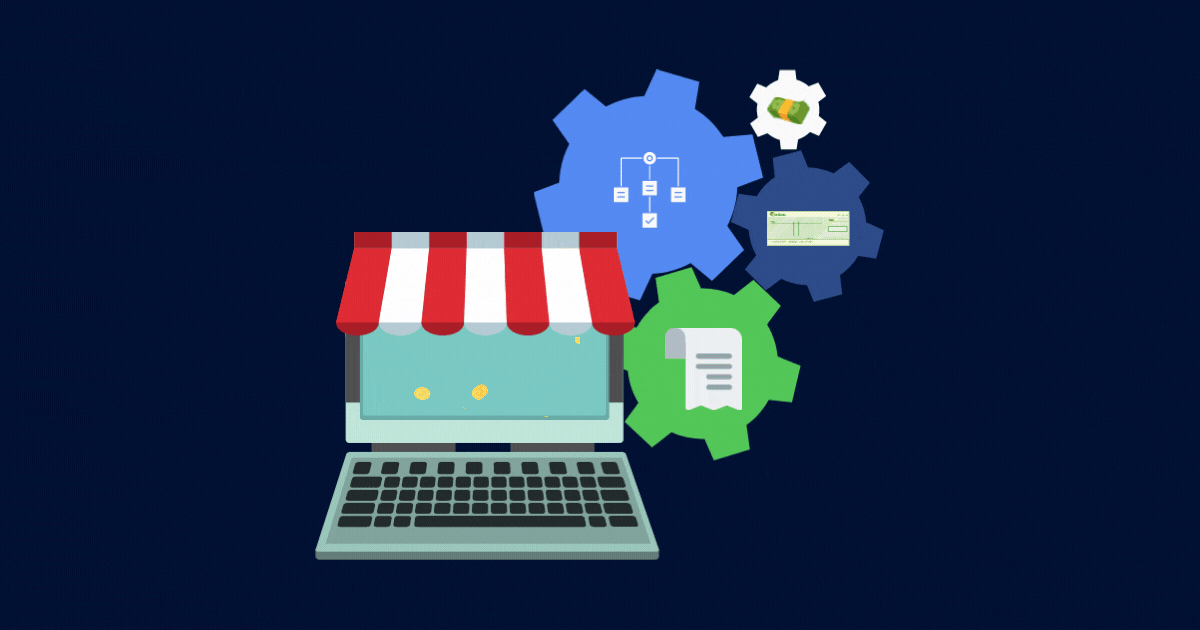
Is your business struggling with cash flow? As an individual responsible for the company’s finances, you must first answer the question of “do you know what cash flow is?” If your answer is “no,” don’t worry once you finish reading to the bottom of this page, you will now know everything about cash flow. You will know that cash flow is the king!
If you already know what cash flow is and want to dive into solving the cash flow problem for your business, skip to the section of your interest:
- What is Cash Flow?
- How to Calculate Cash Flow?
- What are the Different Types of Cash Flow?
- What Causes Cash Flow Problems?
- How Do You Identify Cash Flow Problem?
- How Can a Business Fix Cash Flow Problems?
- Can a Profitable Business Fail Because of Cash Flow Problems?
- Can Cash Flow Be Negative?
- When Is Cash Flow Statement Prepared?
- Why Is Cash Flow Important?
1. What is Cash Flow?
Cash flow is a measurement of how your company is doing by taking how much the company has made and subtracting the expenses. If it’s positive, it’s a good sign, but when it’s negative, the company must figure out why and improve it as soon as possible.
Investopedia defines cash flow as “the net amount of cash and cash-equivalents being transferred into and out of a business. At the most fundamental level, a company’s ability to create value for shareholders is determined by its ability to generate positive cash flows, or more specifically, maximize long-term free cash flow (FCF).”
2. How to Calculate Cash Flow?
Now you know what cash flow means. The next step is to learn how to calculate the cash flow for the business. The ultimate equation/formula for cash flow calculation is as follows:
Net Cash Flow = Net Cash from Operating Activities + Net Cash from Investing Activities + Net Cash from Financing Activities

In order to complete this calculation to find out about the company’s financial health, you must understand the three different forms of cash flow: operating, investing, and financing.
3. What are the 3 Types of Cash Flow?
Understanding the three types of cash flow is crucial to calculate the company’s overall cash flow status.
1. Operating Cash Flow
Operating cash flow (OCF) is the business’s main cash activity earned and used daily to operate the business. The information you need to calculate OCF is revenue generated from providing services or selling products and other operating costs like used by salaries.
Operating Cash Flow = Net Income + Non-Cash Expense – Increase in Working Capital

2. Investing Cash Flow
Investing Cash Flow includes long-term assets. Particularly revenue earned or used related to investment activities like purchasing and selling securities or assets.
Investing Cash Flow = Purchase/Sale of Long-Term Assets + Purchase/Sale of Other Businesses + Purchase/Sale of Marketable Securities

3. Financing Cash Flow
Financing Cash Flow (CFF) is related to cash activities earned or spent on business activities like capital, stock sales, repurchase, and dividend.
Financing Cash Flow = Issue/Repurchase Equity + Issue/Repurchase Debt + Dividend Payments & Other Related Items

Bonus
You wouldn’t want to leave out calculating free cash flow (FCF). FCF is the available money remaining after all expenses have been handled. The business can choose to reinvest the money back into the business to push for further growth.
Free Cash Flow = Net Cash Flow Provided by Operating Activities – Cash Outflow Earmarked for Investment in Property, Plant, and Equipment & Other Long-Term Assets (Capital Expenditures)

What Causes Cash Flow Problems?
There are several reasons businesses end up in a poor cash flow situation, causing the company problems. Here are the top three causes of cash flow problems that are most common amongst small and medium-sized businesses (SMBs).
1. Late Payments
Late payments are one of the most common causes of poor cash flow problems, especially for SMBs. As SMBs operate with fewer clients and a smaller customer base, the businesses can choose to extend payment deadlines in goodwill to maintain a good relationship. However, this could be deadly for the company. Allowing payment extension will increase the likelihood for late payments to persist. Businesses need to realize that maintaining a good relationship doesn’t necessarily mean your business will sustain from lack of cash flow. The company needs to decide and make a firm decision to put an end to practices that are hurting the cash flow and willing to implement penalties to those clients and customers who are taking advantage of the good deed for the more significant benefit of taking this action.
In fact, according to an article by Forbes states that “one-third of all small business owners in the United States estimate their companies have more than $20,000 in outstanding receivables,” with outstanding receivables being $53,399.
2. Delayed Payment Posting
As a ripple effect, late payments heavily interfere with keeping accurate bookkeeping for the businesses. Having inaccurate financial calculate will make it challenging to make critical business decisions, which could take away potential opportunities in front of you due to cash flow uncertainty. Indeed, research by QuickBooks found that “58% say they’ve made a poor business decision because they were worried about cash flow.” Moreover, even when late payment is received, it requires long hours to reconcile the books manually.
3. Varied Payment Terms
Another common cause of poor cash flow is due to varied payment terms. Having different payment due dates for clients and customers makes it difficult to reconcile the book and increases the chances of errors. Plus, having varied payment terms will make it challenging to go after late payments with the limited resources available for SMBs. Even if the business is fortunate to have the resources to do so, companies need to realize that time is money.
How Do You Identify Cash Flow Problems?
The business will naturally notice a cash flow problem by either having too much inventory, not enough cash buffer on hand, and revenue outweighs expenses. According to the “State of Small Business Cash Flow,” 66% of SMBs across the world struggle with cash flow.
How Can a Business Fix Cash Flow Problems?
1. Receive Payments in Time
There should be a set of policies to align as many payment deadlines on fewer dates as possible for efficiency as a company. Moreover, consider implementing late fees on late payments and introducing discounts for early payment, which will motivate customers and clients to pay on time. Allowing your business to secure the cash flowing into the company.
2. Perform a Good Forecast
Build a business routine to do a full cash flow forecast (aka. cash flow projection) in set terms to understand the cash flow for the company’s financial health. A cash flow forecast will allow the business to make a smarter decision in a time of uncertainty that requires fast choices.
3. Be Smart Be Modernized
Drop the old practice to escape from being last and join other companies following modern approaches that improve business practice. Adopt a cloud-based payment platform like Plooto to handle automatic payment collection for recurring payments using pre-authorized debit (PAD). Plus, auto reconciliation saves time and reduces errors.
Can a Profitable Business Fail Because of Cash Flow Problems?
Sometimes accelerated business growth can put the company’s financial health at risk due to a lack of control over cash flow. Therefore, without proper control over cash flow, profitable businesses can fail because of cash flow problems.
Moreover, in an unexpected situation, like the 2020 COVID-19 pandemic, many profitable companies with poor cash flow became short of cash and were put at risk of losing their business.
Can Cash Flow Be Negative?
The definite answer is “YES.” If the business fails to manage its cash flow properly, cash flow can be negative, which means you are at risk of losing your business. PwC, one of the top three accounting firms, stated that “if cash flow is negative, it can be a major warning sign.” Keep in mind that 82% of businesses fail due to poor cash flow. Now you don’t want to be part of that percentage, do you?
When Is Cash Flow Statement Prepared?
The cash flow statement, income statement, and balance sheet are among the three financial statements that a business must prepare at the end of each accounting period. However, as mentioned above, this doesn’t mean the company should leave it until the end of the accounting period. As a business, it is essential to manage cash flow and reconciling accounts payables and receivables continuously.
How to Calculate Cash Flow
-
Calculate your net cash from operating activities.
Add up all the revenue earned by your business and subtract the daily operating expenses to keep the business running, such as software subscriptions and salaries.
-
Calculate your net cash from investments.
This is revenue earned from investments your business has made such as long-term assets, including real estate, and the dividends from stocks.
-
Calculate your net cash from financing activities.
This is revenue earned from the sale of stock, capital or equity in your business.
-
Add the three cash totals together.
The balance of each of the above totals added together will make up your net cash flow, allowing you to see how much cash you have available to reinvest in the business, or other ventures.
Why Is Cash Flow Important?
It’s no doubt that cash flow is vital to all businesses, not just in North America but across the world. Cash flow is the source that keeps the company running and allows you to be profitable. If you are asking the question “cash flow vs. profit?” Investopedia stated that cash flow is more important than profit alone.  to maintain positive financial health for your business.
to maintain positive financial health for your business.













